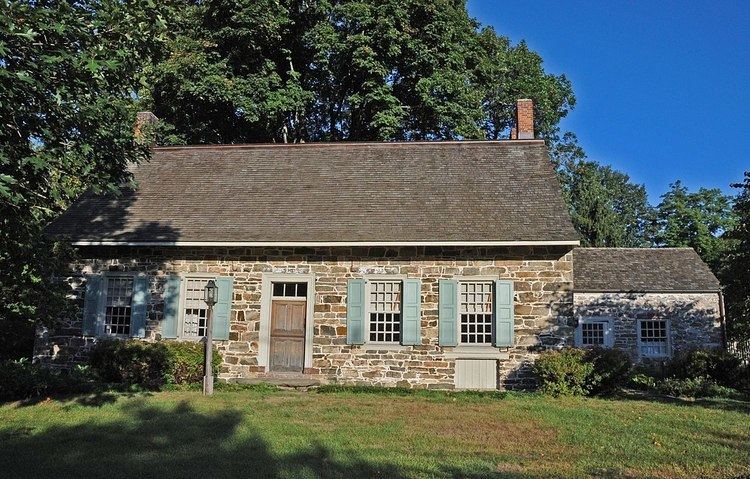Built 1769 NJRHP # 566 Opened 1769 Added to NRHP 11 April 1973 | NRHP Reference # 73001079 Designated NJRHP March 17, 1972 Area 1 ha | |
 | ||
Location 398 Ramapo Valley Road, Mahwah, New Jersey Architectural style Colonial, Dutch Colonial Similar Naugle House, Vreeland House, Zabriskie Tenant House, Garret J Durie House, Hopper‑Goetschius House | ||
Hopper-Van Horn House is located in Mahwah, Bergen County, New Jersey, United States. The house was built in 1769 and was added to the National Register of Historic Places on April 11, 1973. Prior to being owned by the Van Horns, the land was owned and lived on by Rachel Bayard and Lucus Kiersted, who used it as a trading post. Prior to that, there is evidence of occupation by Native Americans.
Contents
History of the Owners: 1700–1849
On August 10, 1700, Blandina Bayard purchased a plot of land measuring 16 miles by 12 miles from local Hackensack Indians. At this time, Blandina believed the land to be in the Colony of New York. It was here that she established a stone cottage trading post, which made her one of the first women entrepreneurs in New Jersey. Upon her death in 1711, her will was probated and the land was granted to her daughter-in-law, Rachel Bayard. The Bayard Family joined into a company with the Laroe and Kiersted families who were familiar with the area. In 1725, the patents to the land was deemed invalid and the Kiersteds and the Laroes were tied up in negitiations until 1743. Upon the settlement, Kiersted sold his land to Hendrick Laroe, who purchased it for his son Jacobus Laroe. In 1750, Jacobus built the currant structure known as the Laroe-Vanhorn House. In 1765, Jacobus sold the house and property to Isaac Bogert. Over the next few decades, the house and land would change hands a number of times.
History of the Owners: 1849–Present
In 1889, Havemeyer purchased the Laroe Van Horn House from William Van Horn. The house was to be used as part of his estate Mountainside Farm and it housed workers who worked on the estate. While Havemeyer lived in the house, he added a new roof.The In 1917, Havemeyer sold the house to Stephen Birch of Marapo Farms and used it to house the herdsmen who worked on the farm. The House became state property in 1972 and housed the President of Ramapo College, which was originally part of the Havemeyers Mountainside Farm. George Potter was the first and only President of Ramapo College to reside in the Laroe Van Horn house. In 1980, the Laroe Van Horn house housed students at Ramapo College for the Environmental Studies Program. In 1989 was purchased by Byrant and Joan Malcolm. A restrictive covenant was attached to the deed, the house had to be preserved and maintained in accordance with the recommended approaches Interiors Standards for Rehabilitations. Any changes to the house needed approved in writing by the Commissioner of the Department of Enivronmental Protection. In 2014, they sold the house to Anne-Lise Jacobsen.
Grave Site
Behind the Hopper-Van Horn House a family graveyard. In 2012 Ramapo College adjunct professor Jeff Williamson excavated another gravesite further back in the woods that he believed to contain the unmarked graves of slaves and freedmen that used to work the land.
Archaeology
In June 1980, students of Ramapo College were involved in an archaeological dig on the site. They excavated about 13,000 artifacts which helped corroborate information about the house's history and inhabitants. They were able to find artifacts dating back to the early period of habitation, including when the area was a trading post. They were also able to find extensive evidence of the presence of a local tribe prior to European claiming of the site. The collection is currently housed at the Mahwah Museum.
